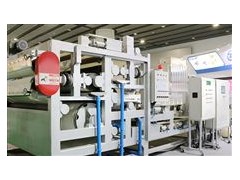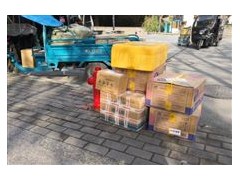Eliminate the ubiquitous "you"
As we all know, electrostatic phenomena are mainly reflected on the surface of objects, and printing is carried out on the surface of objects. In the printing process, due to repeated impact and friction between different substances, all printed objects will have static electricity. The small editor will analyze and solve the electrostatic problem that makes the printing industry headache from the following three parts.
No.1 three factors
① Process impact
The object will be subject to extrusion, friction, contact, peeling, machine speed and other factors, which will cause the surface temperature of the object to rise, and easily cause the thermal decomposition of molecules, thus causing the redistribution of electrons and the generation of static electricity.
② Influence of equipment and raw materials
Most of the printing presses are metal objects. The outermost electrons of the metal objects are easily separated from the attraction of the atomic nucleus and become free electrons. Therefore, the metal objects have the ability to conduct electric charges rapidly. In printing, the friction and electrification of paper, lining, wire belt, etc. cause the surface condition of the object to have a great impact on the generation of static electricity.
③ Environmental impact
When the air temperature in the printing place rises, the thermal decomposition of molecules and the hot spot effect will be more intense, so that the accumulation of static electricity will be greatly increased. Temperature and humidity are interrelated. The rise of temperature will dry the air, and the relative humidity of the space will decrease. Humidity has a much greater impact on static electricity than temperature.
No.2 hazards caused by static electricity
① Harm to printing quality
Due to the influence of static electricity, a lot of dust and impurities will be adsorbed on the paper, and the paper on the delivery table will attract each other and stick together, resulting in the paper aligning device unable to align them. At the same time, double sheet failures will often occur, resulting in inaccurate overprinting, ghosting, text blooming and other phenomena, and also affecting the folding work of the next process.
In printing, the high-speed contact separation and friction will cause the ink to generate static electricity and form relatively fixed light color ink spots. This will not only affect the quality of printed products, but also reduce the service life of the printing press.
② Harm to human body
The printing workers often contact with the charged paper and paper pile when operating in the workshop. When the operating fingers touch the printing machine shell or metal parts, the human body will discharge the static electricity from the fingers to the printing machine shell, causing the static electricity to leak into the ground, and the human body will be shocked.
Although the electric shock of printing static electricity to people is only an instantaneous shock, and the discharge current is only at the level of microampere, it is worth noting that the sudden electric shock will cause people to feel acupuncture and numbness, which will make people nervous and affect the operation of printing workers, and may cause product or personal accidents in serious cases.
③ Cause fire and explosion
During the operation of high-speed printing press, a large amount of static electricity will be generated due to the strong friction during high-speed operation, and spark discharge is easy to occur. When the discharge spark amount reaches the minimum ignition energy of gasoline and alcohol, fire and explosion will be caused.
No.3 help you solve problems
① Release elimination method
After the printing static electricity is generated, the electrostatic charge will be naturally released through various ways, but the release speed is very slow. In order to prevent the accumulation of static electricity, it is necessary to accelerate the release of static electricity. Usually, anti-static additives are used to spray on the surface of insulating materials. When the water in the air is adsorbed on the surface of the materials, water ink is formed to reduce the resistance, strengthen the conductivity, and let the electrostatic charge be released quickly.
② Neutralization elimination method
The electrostatic elimination device is used to eliminate the static electricity on the material surface. The electrostatic elimination device uses ions generated by corona discharge to accelerate the neutralization of electrostatic charges on the surface of materials. Therefore, the electrostatic elimination device is also called an electrostatic neutralizer. At present, the common electrostatic elimination devices in the market are ion air nozzle, ion fan and ion air bar. It can effectively eliminate static electricity, improve print quality and ensure production safety.
epilogue
With the development of science and technology, the methods to overcome static electricity are constantly updated. The static electricity elimination devices produced by Shengding precision / dyne have been widely used in mobile phone, semiconductor, film, printing and other industries, and can be used in occasions where the grounding cannot be removed, the temperature management is inappropriate, the insulator workpiece, and the conductive material is not desired.







